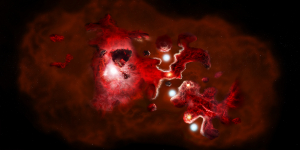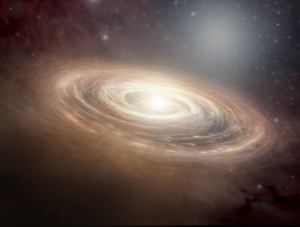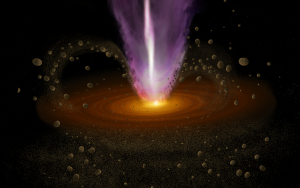Astronomers have discovered a remarkably clumpy rotating galaxy that existed just 900 million years after the Big Bang, shedding…
ALMA Reveals Stunning Details of Infant Galaxies in the Early Universe
Astronomers are getting a much clearer picture of what galaxies looked like in the early Universe, thanks to a…
ALMA Reveals Lives of Planet-Forming Disks
An international team of astronomers has unveiled groundbreaking findings about the disks of gas and dust surrounding nearby young…
From Stardust to Stone: Windswept Grains Hold Clues to Planet’s Beginnings
The Atacama Large Millimeter/submillimeter Array (ALMA) has uncovered a key piece of the puzzle in how rocky planets, such…
exoALMA Gives Astronomers A New Look At How Planets Are Formed
A team of international astronomers have embarked on an exciting new project to hunt for planets forming around young…
ALMA Detects First-Ever Hydrogen Recombination Lines From Proplyd Disks in Densely Packed Orion Nebula Cluster
Most stars form in clusters, where hundreds to thousands of stars coevolve in proximal environmental conditions that dictate how…











